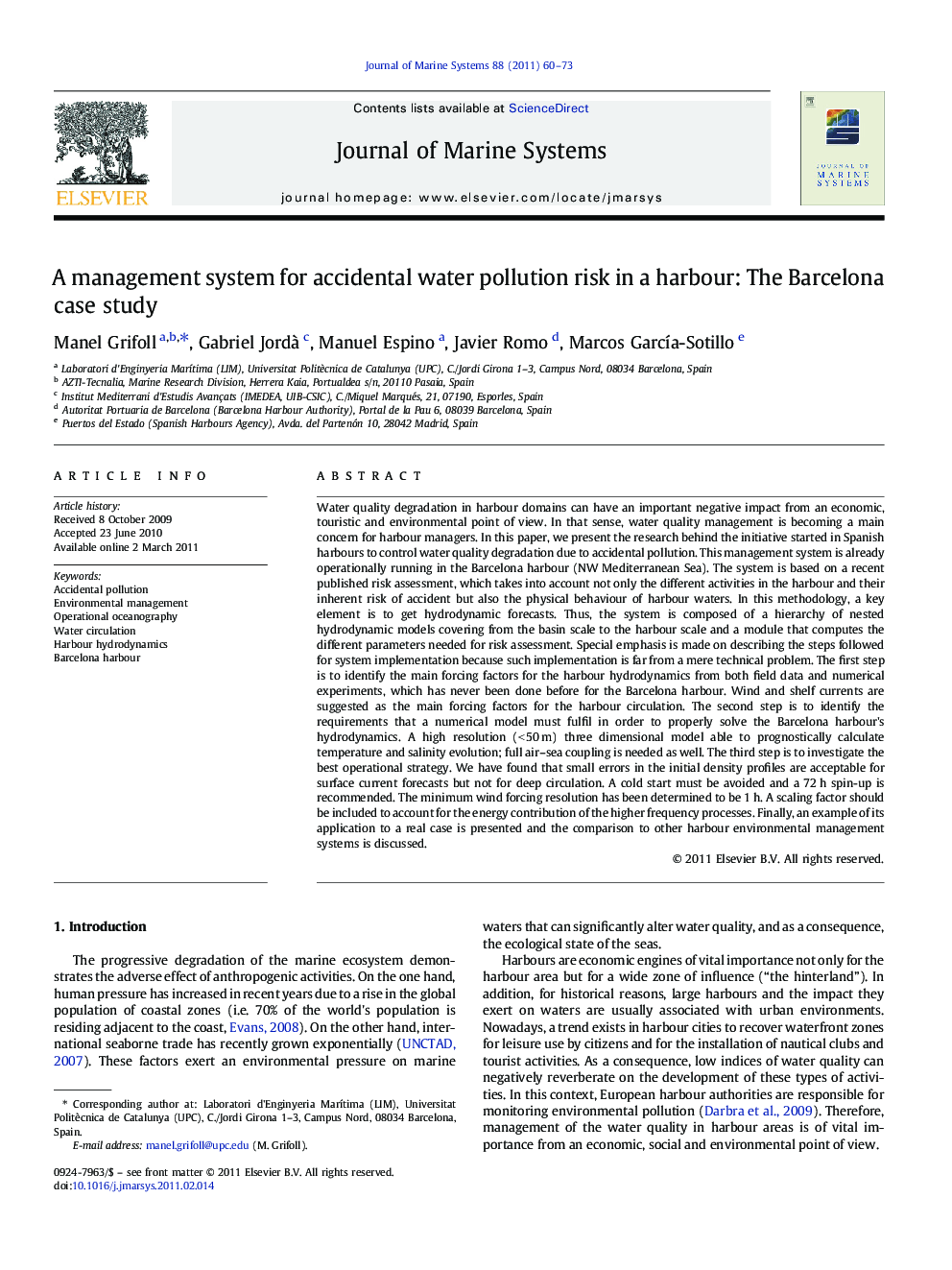| کد مقاله | کد نشریه | سال انتشار | مقاله انگلیسی | نسخه تمام متن |
|---|---|---|---|---|
| 4548438 | 1327905 | 2011 | 14 صفحه PDF | دانلود رایگان |

Water quality degradation in harbour domains can have an important negative impact from an economic, touristic and environmental point of view. In that sense, water quality management is becoming a main concern for harbour managers. In this paper, we present the research behind the initiative started in Spanish harbours to control water quality degradation due to accidental pollution. This management system is already operationally running in the Barcelona harbour (NW Mediterranean Sea). The system is based on a recent published risk assessment, which takes into account not only the different activities in the harbour and their inherent risk of accident but also the physical behaviour of harbour waters. In this methodology, a key element is to get hydrodynamic forecasts. Thus, the system is composed of a hierarchy of nested hydrodynamic models covering from the basin scale to the harbour scale and a module that computes the different parameters needed for risk assessment. Special emphasis is made on describing the steps followed for system implementation because such implementation is far from a mere technical problem. The first step is to identify the main forcing factors for the harbour hydrodynamics from both field data and numerical experiments, which has never been done before for the Barcelona harbour. Wind and shelf currents are suggested as the main forcing factors for the harbour circulation. The second step is to identify the requirements that a numerical model must fulfil in order to properly solve the Barcelona harbour's hydrodynamics. A high resolution (< 50 m) three dimensional model able to prognostically calculate temperature and salinity evolution; full air–sea coupling is needed as well. The third step is to investigate the best operational strategy. We have found that small errors in the initial density profiles are acceptable for surface current forecasts but not for deep circulation. A cold start must be avoided and a 72 h spin-up is recommended. The minimum wind forcing resolution has been determined to be 1 h. A scaling factor should be included to account for the energy contribution of the higher frequency processes. Finally, an example of its application to a real case is presented and the comparison to other harbour environmental management systems is discussed.
Research Highlights
► An operational system for water quality risk management based on circulation forecasts is presented.
► Recommendations for the implementation of operational forecasting systems for the circulation in microtidal harbours are proposed.
► It is shown that an optimal management of pollution risk in harbours requires continuous forecasting of harbour circulation.
► A new methodology for the risk management of water quality degradation is implemented operationally for the first time.
Journal: Journal of Marine Systems - Volume 88, Issue 1, October 2011, Pages 60–73